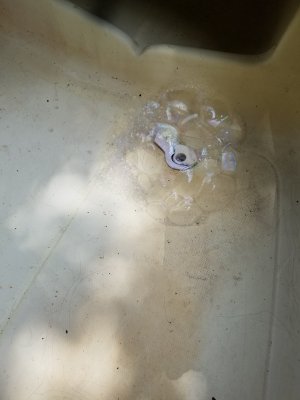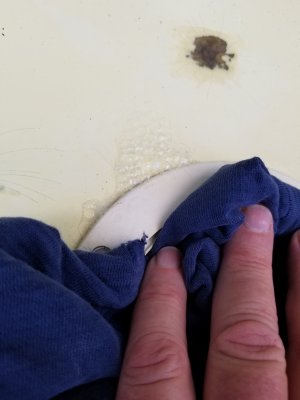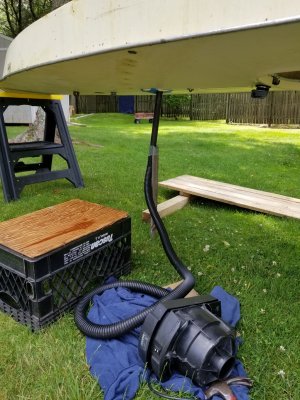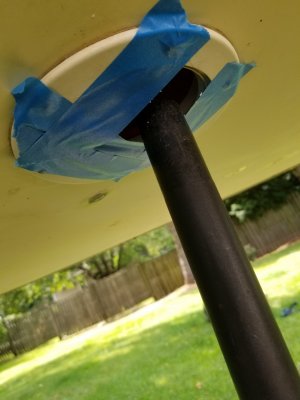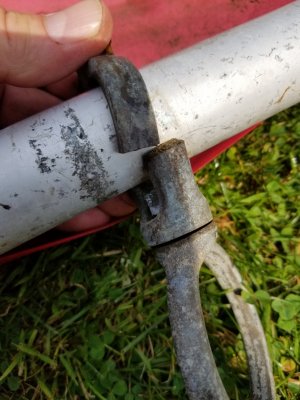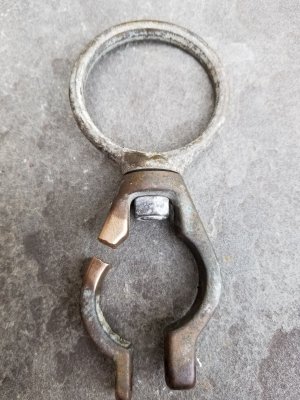I agree and mentioned this recently: But I use 45 grit because I have a roll of about 30-inches by 25-feet of it.I have found a few failures of sunfish repairs due to not prepping so the adhesive has something to stick to on the surface. Epoxy and poly resin need a properly ruffed up surface so it molecules can grab onto something. So the slats and the backside of the fiberglass should be sanded. The grit is technically dependent on the type of adhesive. But 80 grit seems common.



 Regular sheet metal screws is what I've used.
Regular sheet metal screws is what I've used.


